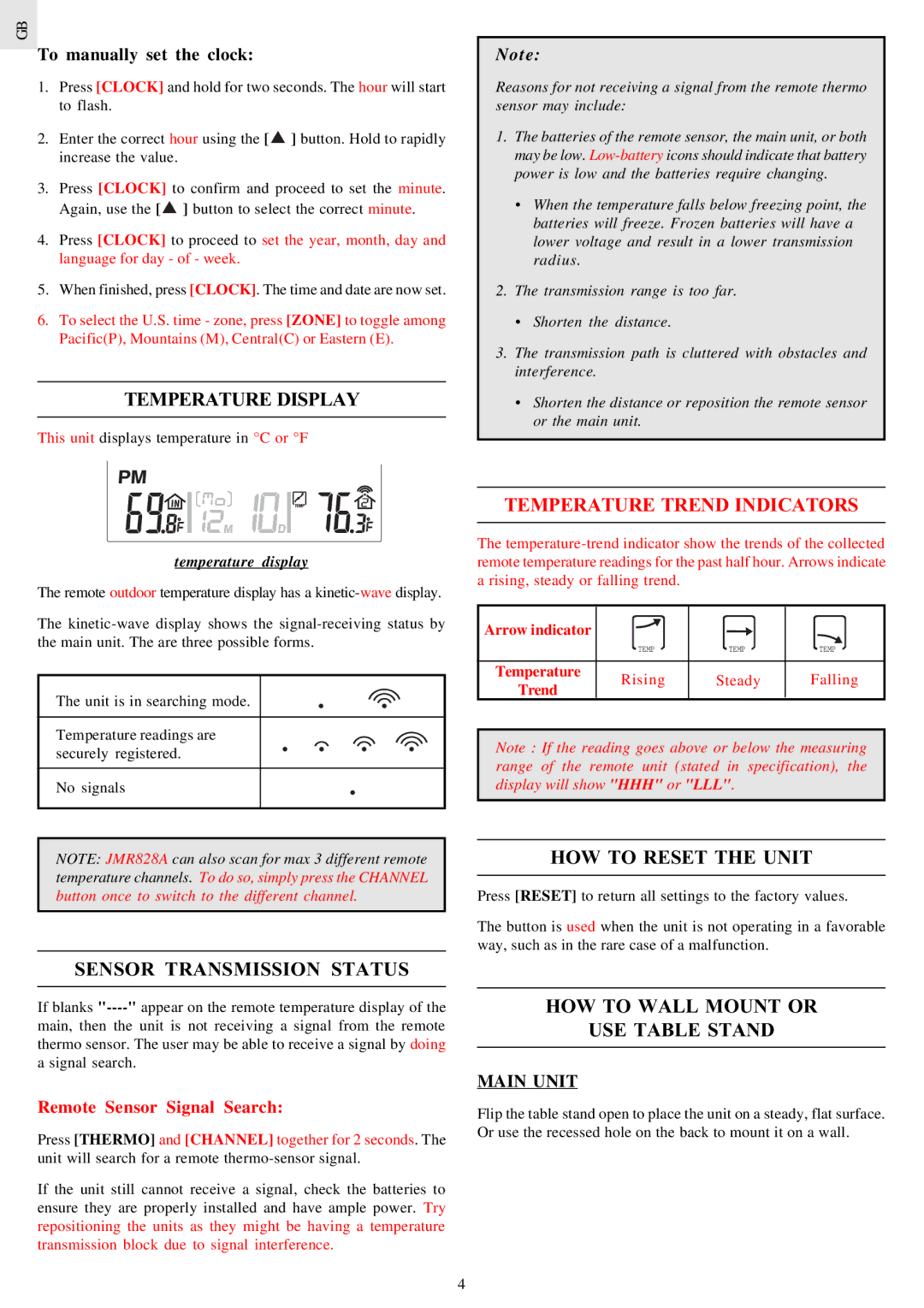JMR828A specifications
The Oregon Scientific JMR828A is a versatile weather station that blends functionality with sleek design, making it a favorite among weather enthusiasts and casual users alike. One of its standout features is its ability to provide accurate, real-time weather updates, making it an essential tool for anyone looking to stay informed about changing weather conditions.This device comes equipped with a wireless sensor that can be positioned outdoors, allowing users to monitor temperature and humidity levels right from the comfort of their homes. The JMR828A can display both indoor and outdoor temperature readings, providing a comprehensive view of the environment. This dual-monitoring capability is particularly useful for those who want to track how different conditions may affect their living space or outdoor activities.
With a user-friendly interface, the Oregon Scientific JMR828A offers a clear LCD display that makes reading data easy and straightforward. It features customizable settings, allowing users to choose temperature units (Celsius or Fahrenheit) based on their preference. The backlight feature ensures that users can view readings even in low-light conditions, making it functional day or night.
Another noteworthy characteristic of the JMR828A is its advanced forecast technology. Using historical data and current weather patterns, this device can provide users with accurate short-term forecasts. The built-in weather icon display helps to visualize upcoming weather conditions, allowing users to plan their day more effectively.
The Oregon Scientific JMR828A is also designed for ease of use and practicality. It typically has an extended battery life, ensuring that users can rely on it for long periods without frequent replacements. The device can be easily set up and connected, making it accessible for all types of users, from novice to expert.
Overall, with its reliable weather monitoring capabilities, user-friendly design, and advanced technologies, the Oregon Scientific JMR828A stands out in the realm of personal weather stations. Whether for gardening, outdoor activities, or simply keeping up with the local climate, this device is an invaluable addition to anyone's toolkit. Its blend of accuracy, convenience, and aesthetics makes it a significant player in personal weather technology.

